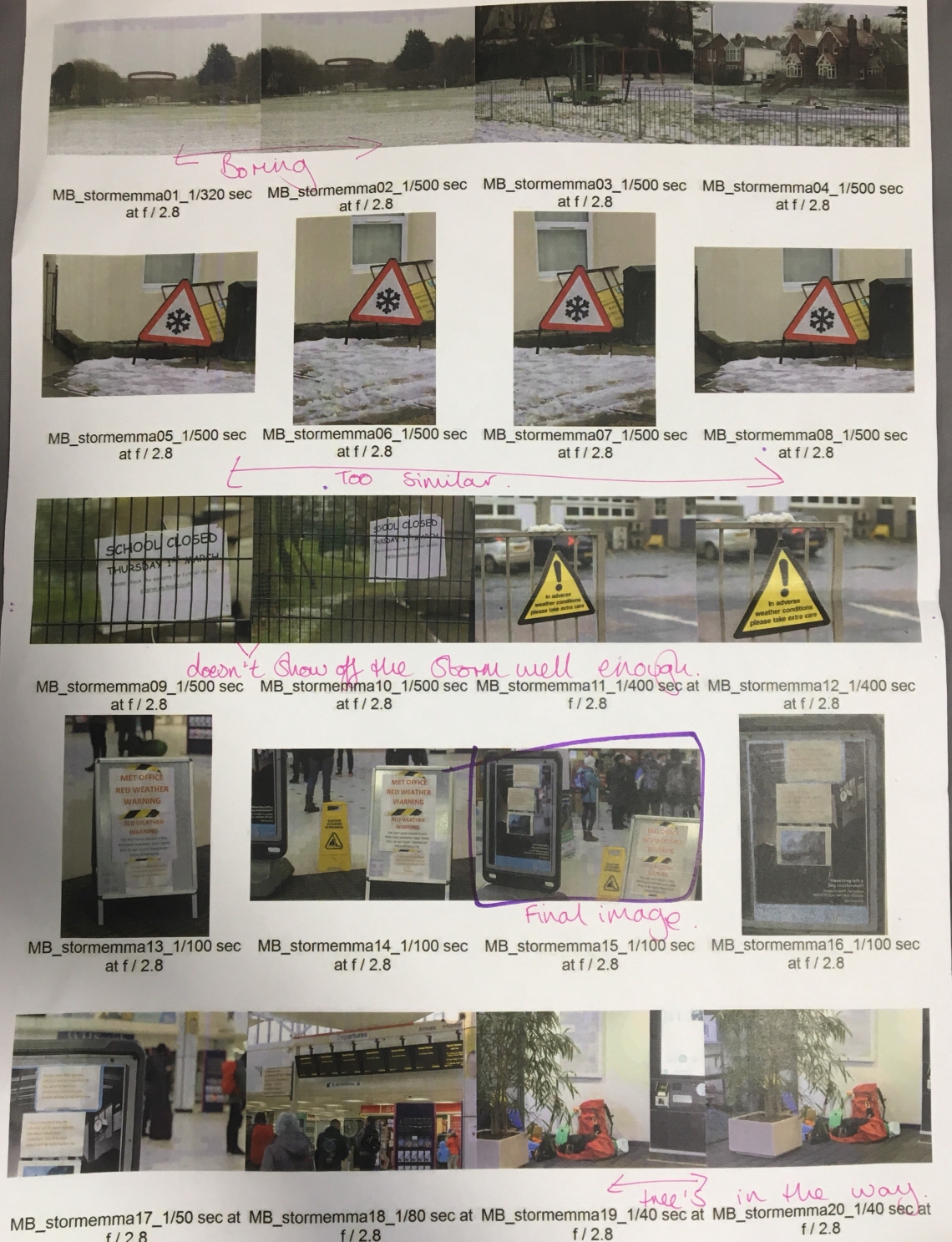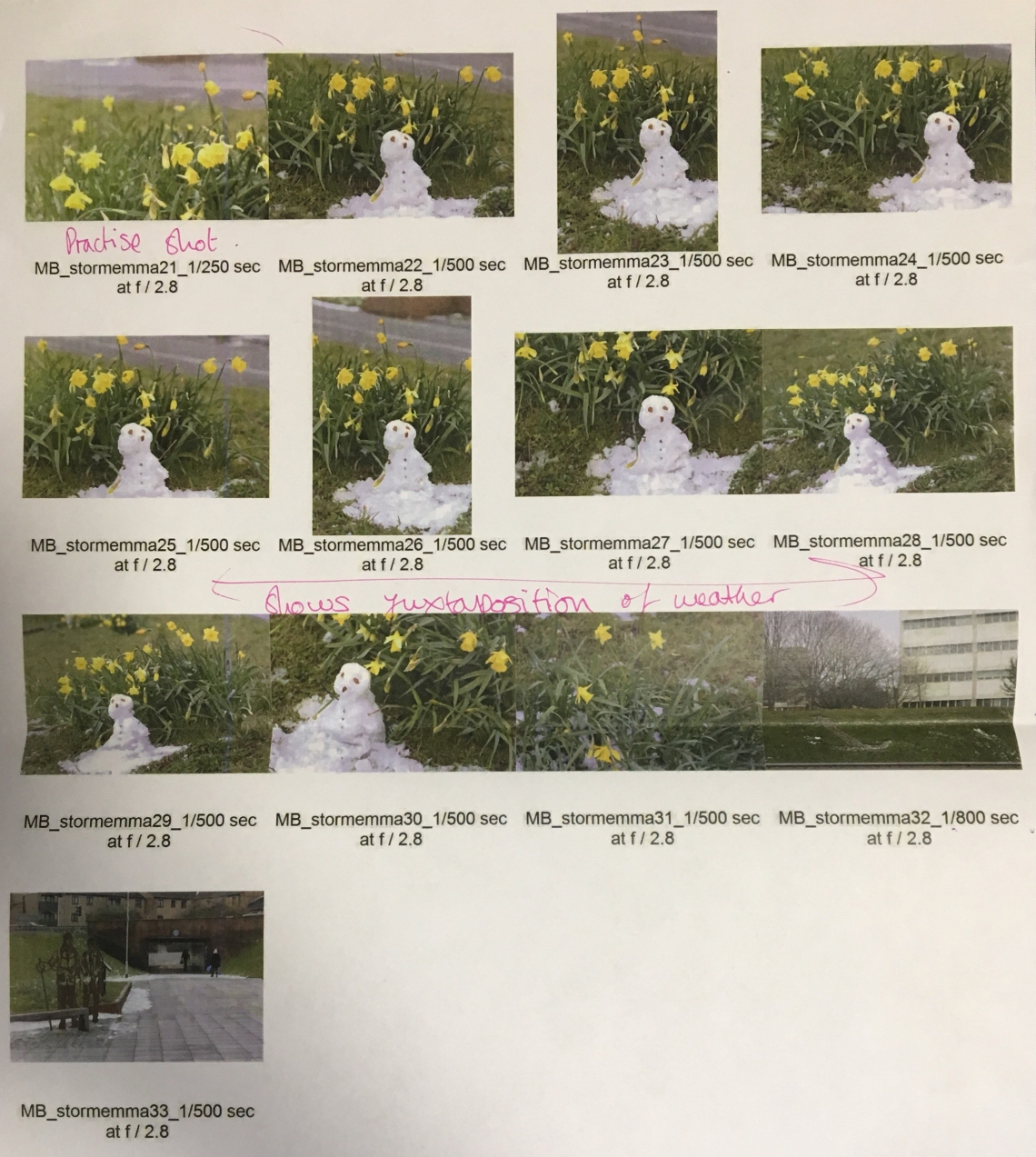This module aims to challenge the environment that we, as students, work collaboratively to produce creative output within our images. Our lectures want us to gain an understanding on how to apply skills we have been taught to projects that are outside of our comfort zone. Throughout this module we will gain an understanding of the importance of group work, personal and interpersonal skills. This will help us with future jobs once we have finished university. We are taught to continually critically reflect on our work to help us understand how to improve our work in between every job.
For this submission, we need to produce three bodies of work. This includes six single ‘news or feature’ images. These are images that tell the whole story in a single shot.
The next is sport I need to produce three images from the same match/game. Finally, I need an extended feature this is coverage of a ‘live’ event. There will need to be about 6-8 images produced for this part. One image must be upright so it’s suitable for a front.
Basic Law
During this lecture we are being taught the basics of photojournalism this includes the kit and law surrounding taking an image on public property. It is important that we are educated on these basics if we want to pursue our career as a photojournalist.
Basic Kit
When it comes to a photojournalist kit it doesn’t just include a camera and a few lenses but the package they present as a whole.
- We should have a web presence weather it is a website, Instagram ,twitter or Facebook page. All of these would help a future employers look through our portfolio.
- The camera kit – Canon or Nikon Camera – 35mm digital SLR – a F2.8 wide angle lens – a F2.8 telephoto lens – a flashgun
- A computer with Photoshop or photo mechanic. The computer also needs to have a wireless connection.
- Access to the internet whether its WiFi or 4G from my phone. When it comes to news the fastest image will sell not the best image. Therefore the speed that the image is sent will effect the outcome of the picture.
- smart phone – clients will often send an email rather than ring. By having a smartphone on hand you can tweet and Instagram images from location to keep an active social media feed.
- driving license and a car.
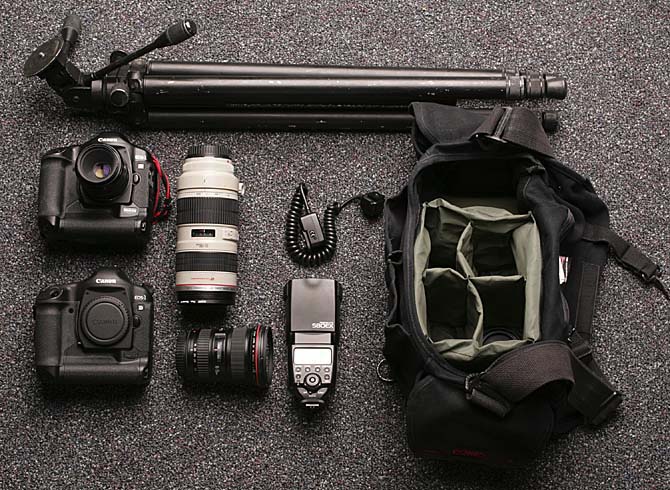
Basic Law
There is no law preventing a photographer from taking photos of whomever or whatever you want, so long as you are standing on public land and not on private
property and this also includes photographing police officers. There are a couple of exceptions to this, and these include government and military installations and
some airports. However, use your common sense when photographing and it should be fine.
File Formats
There are a number of different file formats which can be selected on most cameras. The most common of these are JPEG, TIFF, RAW and DNG.
JPEG – one of the most common image file formats in use today. A large majority of the images found on websites will be in JPEG. This uses a form of data compression to keep the file size low. Each time a JPEG is opened and closed it re-compresses slightly, resulting in a small amount of data loss. Over time the data loss can become visibly apparent.
TIFF – this is often favoured by Graphic Artists and photography professionals as it is a format which suffers very little from data loss. RAW and DNG really fall under the same category as these file formats are simply uncompressed digital information.
RAW files- Nikon are *.NEF, whereas Canon use *.CR2. In an attempt to standardise RAW file formats, Adobe created the DNG (Digital Negative) format. This is simply a RAW file which contains uncompressed digital image information. Most professional photographers shoot in RAW to retain maximum quality. Any adjustments to size and quality can be made after using image processing software such as Photoshop or Lightroom. Due to its large size, raw files take longer to load onto you card resulting in a delay in shooting It is common for photographers to retain a copy of the original, un-manipulated RAW file in their archive as a precaution.
Research
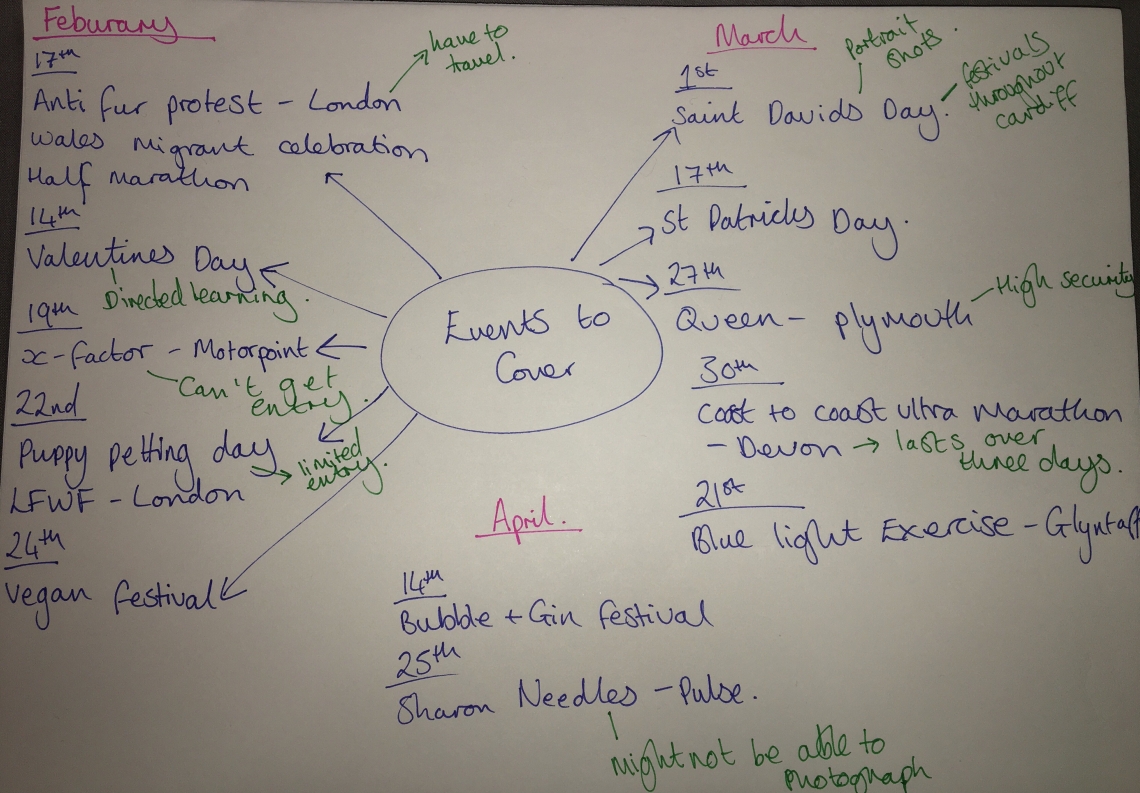
Over this course of time we have to capture all of images for submission and to practise there are many events we are able to photograph. I do have a set back because a lot of these events are on when I am working however, I am going to photograph as much as I can.
For the sport section I have been informed that every Wednesday there are practises and matches on at USW Treforst campus. This will benefit me because it means that I can travel there multiple time to practise my sports photography before my hand in.
As there is a range of events I have planned to go to, I am going to try photograph a 5 picture story at each event. This will help me when choosing what event to use as my feature story for a part of my submission.
Directed Learning
Pancake Day
During this term there has been shroves Tuesday, which means pancake day for a lot of people. Our directed learning is to photograph events around Cardiff that link to pancake day. In Cardiff Bay there is a pancake flipping race which I want to photograph. When photographing I have to make sure I capture a range of upright and wide shots to have a variety of images to choose.
 I chose to walk to the location because before hand the only information we were given was that the race would be in Mermaid Quay. so by walking i thought it would be easier to find instead of getting the train or taxi. Thankfully the day is going to be dry which is good because this is an outdoor event.
I chose to walk to the location because before hand the only information we were given was that the race would be in Mermaid Quay. so by walking i thought it would be easier to find instead of getting the train or taxi. Thankfully the day is going to be dry which is good because this is an outdoor event.
There was some difficulty finding the location of the event because the event was not correctly advertised. Once I found the location there was another set back because of the lack of advertising, no one had signed up to the event which meant that we had to promote it while stood in the streets in order to be able to photograph the event. Once we got a few people to do the race we managed to get some photos.

After going through the contact sheet and reviewing the best pictures I have chosen the image below as the final image for pancake day. The other images that were taken of this event doesn’t show the story like this image does. This image includes police officers which shows a fun and approachable side to police as they usually get portrayed as very masculine and fearsome.

Valentine’s Day
This directed learning is to challenge us to produce two images, one upright and one wide shot that shows off valentines day. My initial ideas were to go to the streets and photograph people celebrating valentines day. However, my problem with this is that the directed learning was due in two days before valentines day so I could not capture people in the moment. My back up idea was to attempt to create the sense of love without having any faces in the shot. My first idea is to use love hearts sweets as they are a common gift that is given on valentines day. For this image I want to use red gels as people associate the colour red with love. when shooting these photos I made sure each shot was taken as an upright and wide shot so I had more choice when picking my final two images.
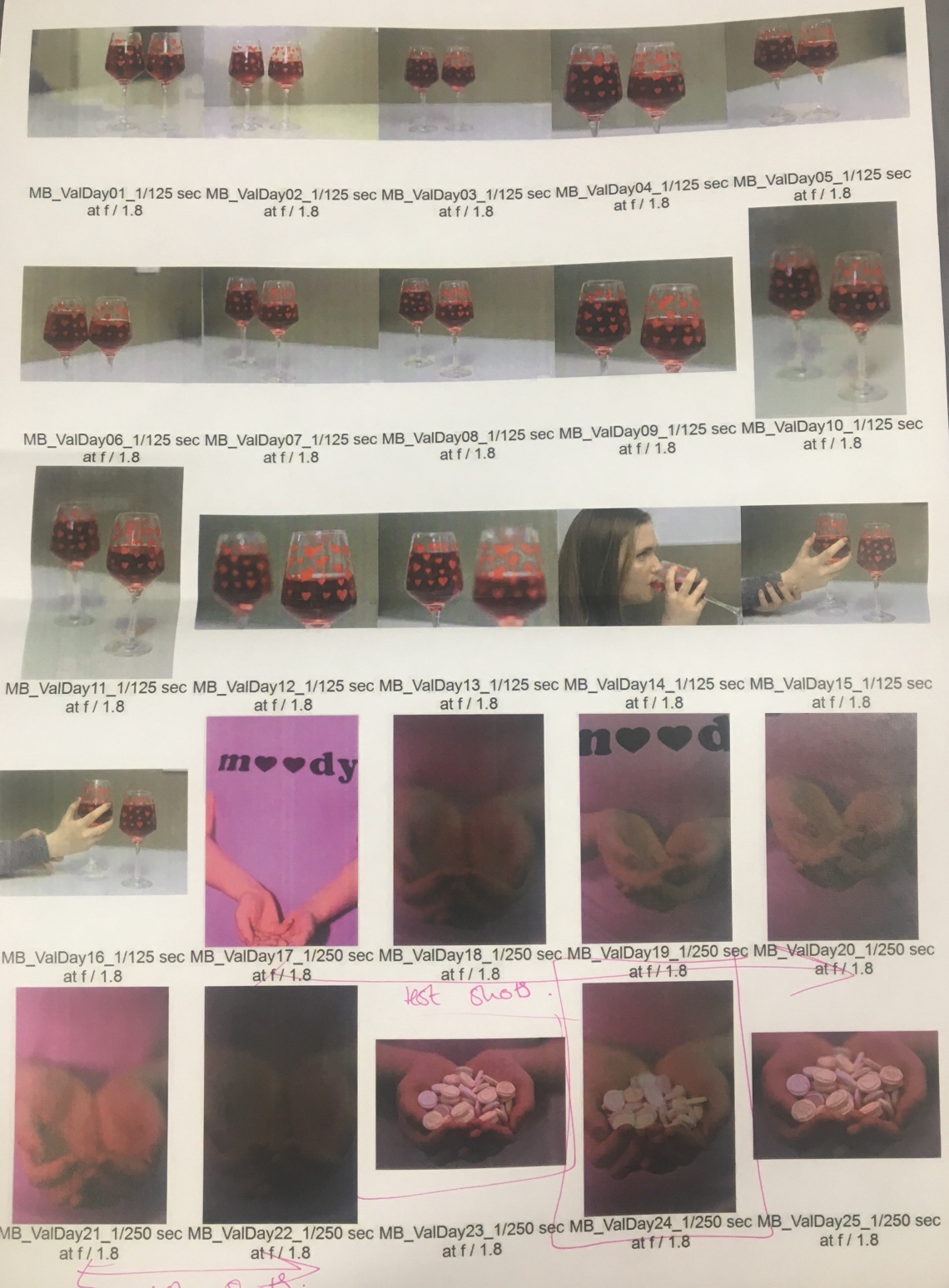
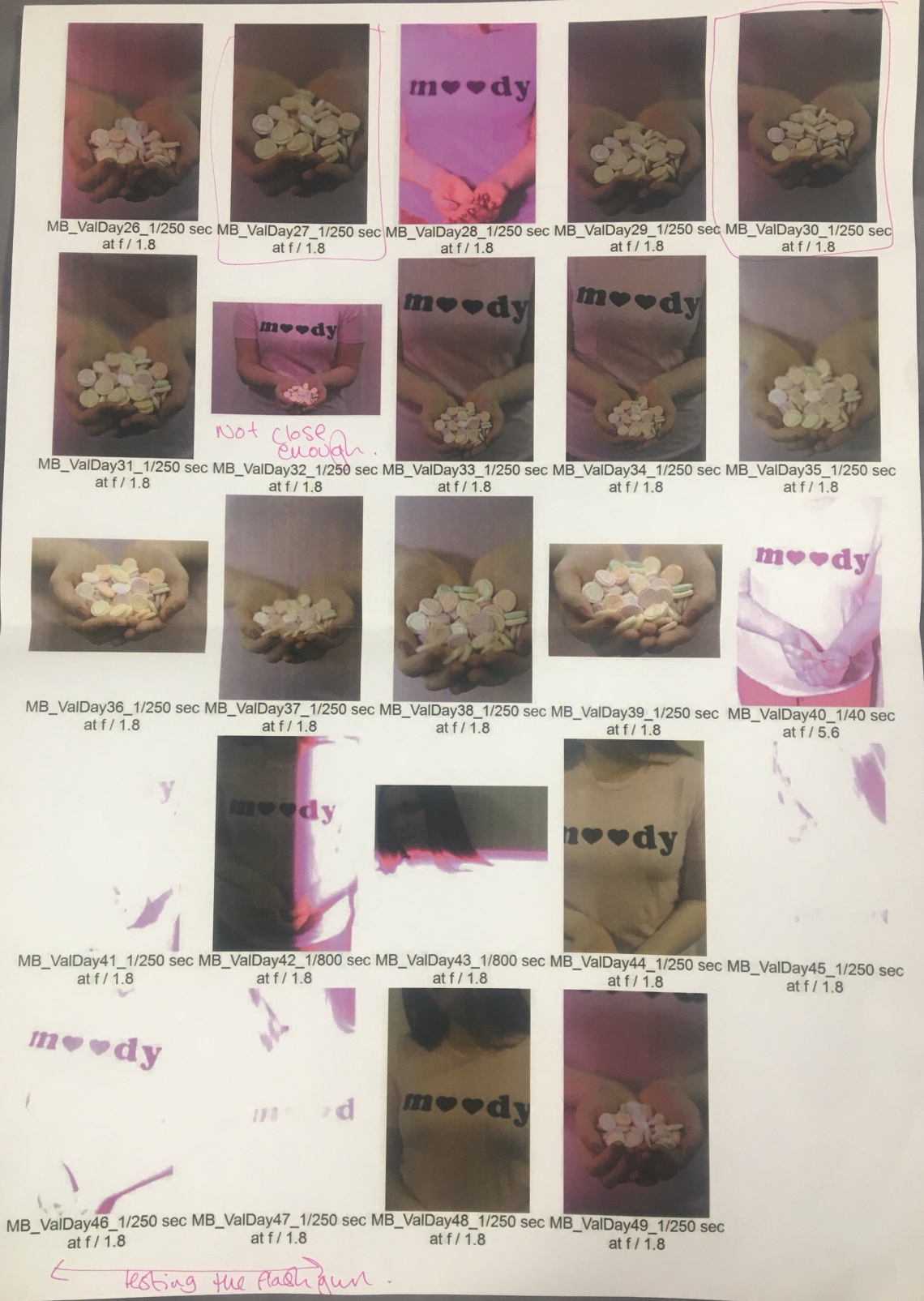

My images form my contact sheet either show that they are too bright or too dark.
This is the upright image I have chosen for the final image of his directed learning. For this I used a shallow depth of field to put emphasis on the love hearts. The red gel adds a softness and warm touch to the image.
By photographing Valentines day it has allowed me to document live news that will be able to use as a stock image for years to come. Making us photograph one upright and one wide shot causes us to get in the habit of getting two of each shots so that the picture desk has more options and can sell more of my images in the future.
#PortraitCymru
#PortraitCyrmru is a hashtag that Ffoton have put out to get people sharing their portrait work with each other. One of our tasks is to go out into the city centre and take an environmental portrait that is suitable for #portraitcyrmru within an hour. Therefore we didn’t have any time to plan what to shoot. While I walked through the centre I decided to go into Cardiff Market because there are a variety of stores. I came across this stall that was full of fabrics and ribbons. I thought this would make a very interesting background.

The magazine ‘Portrait Salon’ is a collection of portraits, including a lot of environmental portraits. By looking through a number of editions of these magazine I took inspiration for what type of portraits I was to photograph. For example this environment portrait by Harry Borden shows the model still working while being photographed. I think that by doing this it adds another element to the story the photographer is trying to portray. Therefore, when I photograph my environmental portrait I will get the model to continue working while I photograph them.
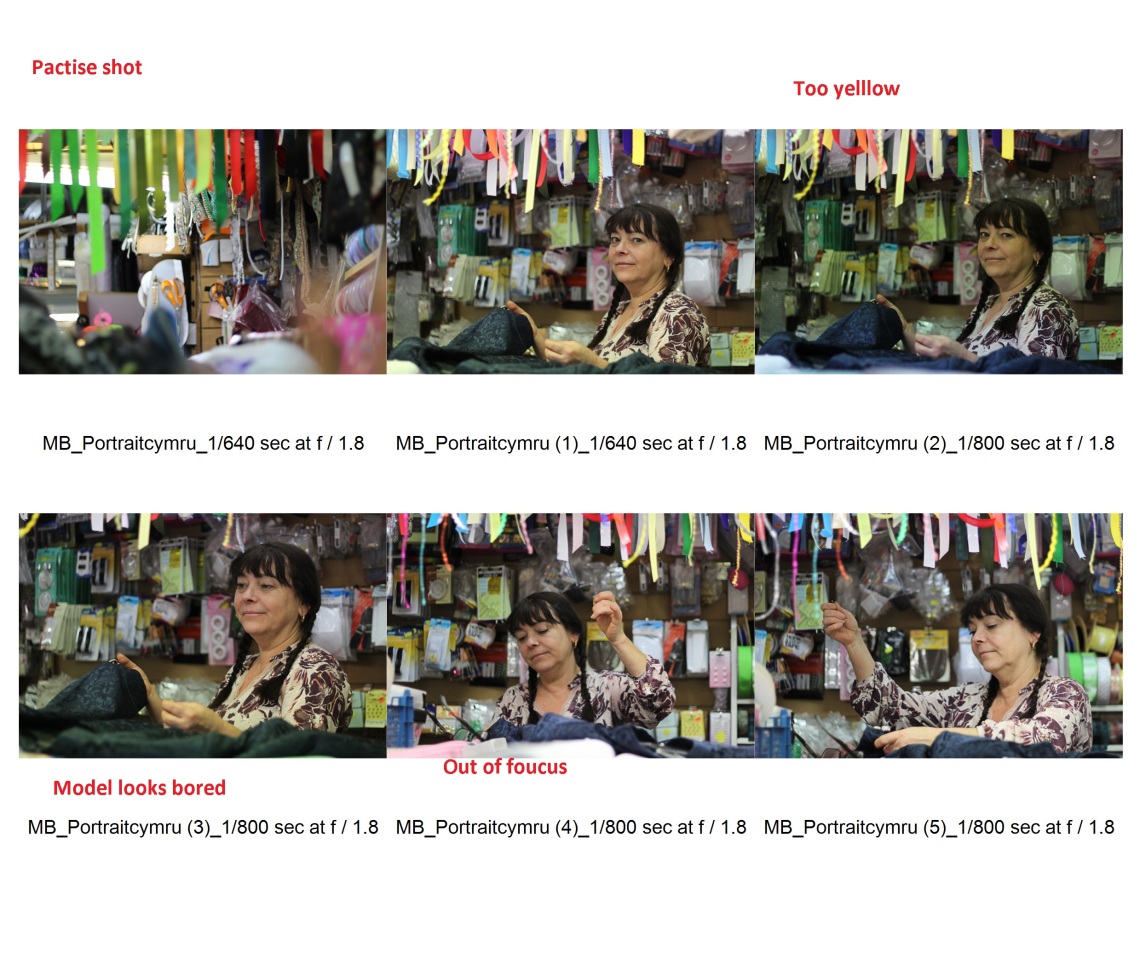
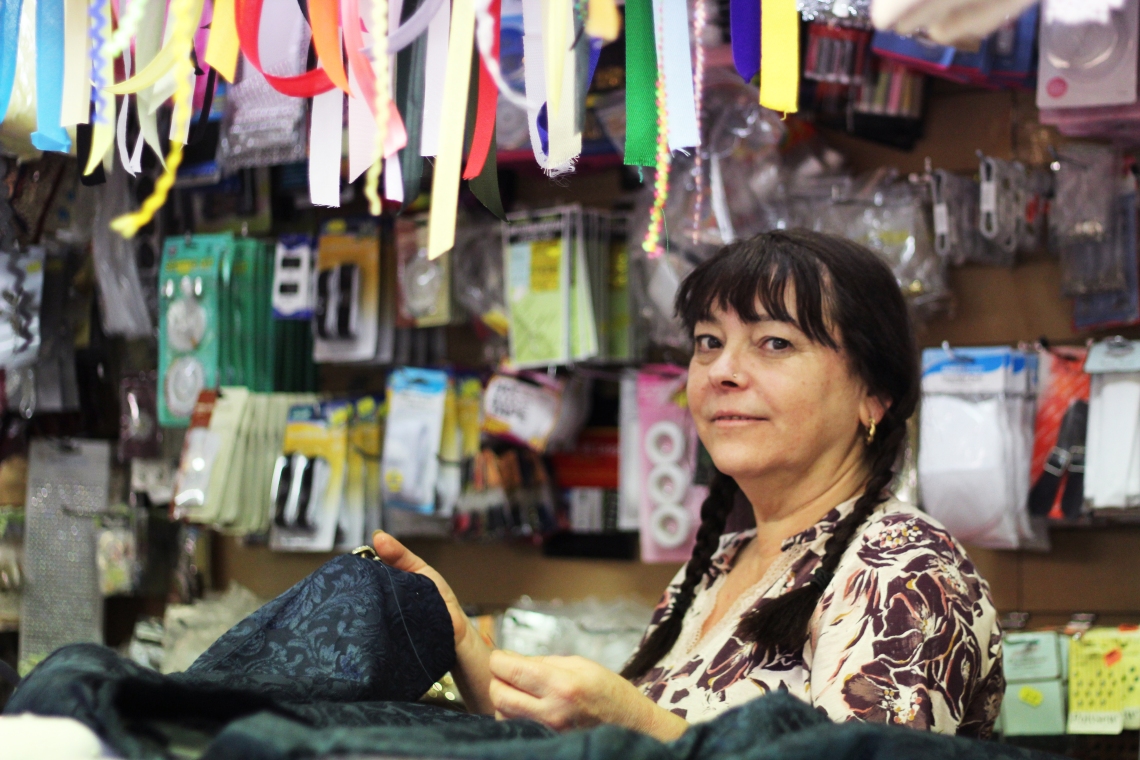 This image shows the environment of the stall because of the foreground and background , I wanted to include the ribbons in the foreground because I believe it adds an extra level of depth to the image. When I was photographing this image I took into consideration the portrait by Harry Borden in the ‘Portrait Salon’ and tried to incorporate his techniques into my #Portraitcymru.
This image shows the environment of the stall because of the foreground and background , I wanted to include the ribbons in the foreground because I believe it adds an extra level of depth to the image. When I was photographing this image I took into consideration the portrait by Harry Borden in the ‘Portrait Salon’ and tried to incorporate his techniques into my #Portraitcymru.
By doing the #portraitcymru it challenges me to approach people that I normally wouldn’t speak to. I have little to no confidence when it comes to speaking to people so this has helped me with my confidence. This challenge has also helped me to work with lighting difficulties because Cardiff market does not have much natural light which can cause problems while photographing.
Storm Emma
Earlier this year the UK was hit with a huge snow storm known as Storm Emma. Storm Emma stopped everything from stores opening, universities opening, train tracks broke and caused hundreds of people to be stranded. I was however, snowed in to Plymouth which unlike Cardiff had little snow. I wanted to take pictures however there was very little snow to work with. I managed to get some images of the remaining snow. As there was little snow I wanted to show the impact so I went to Plymouth train station to show people stranded and the signs that were put out to give people information.

This image shows the impact the storm had on people. All trains leaving Plymouth station had been cancelled for about three days. There were many people camping out at the train station encase there was any change. This became a common problem across the UK. Therefore, it was covered in a lot of news papers.

Both tabloids and broadsheets showed the impact Storm Emma caused. This image is one that The Sun published, it shows how the snow has effected the motorway. The majority of images in the newspapers – including this one- came from the press association. All of the press association images are similar to this one which is similar to mine because it shows how the snow effected people and their daily lives.
Photographing Storm Emma helped me to realise how to photograph real news stories because without these images there would be no indication to how bad the situation was. There was also a high demand for these images at a fast speed, unfortunately my turn over for these images weren’t fast enough. This put into perspective how fast images needs to be produced and sent out to the media.
USW Creative Event
Creative Industries was hosting an event in the Atrium building. This event was for film and media students, the students had guest speakers and there were booths in the atrium main street with information on. Our task was to photograph both the talks and in the main street of the atrium.
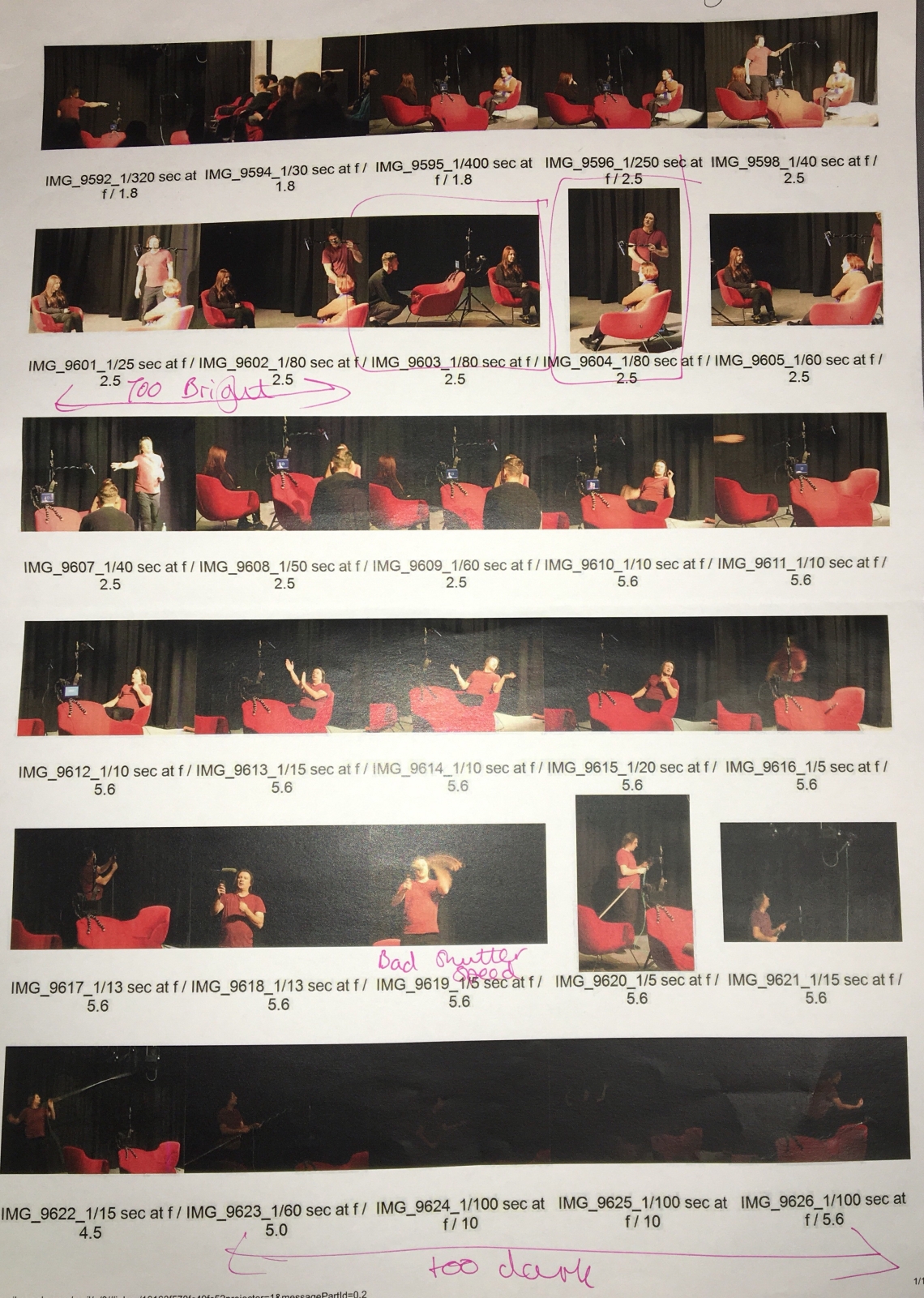
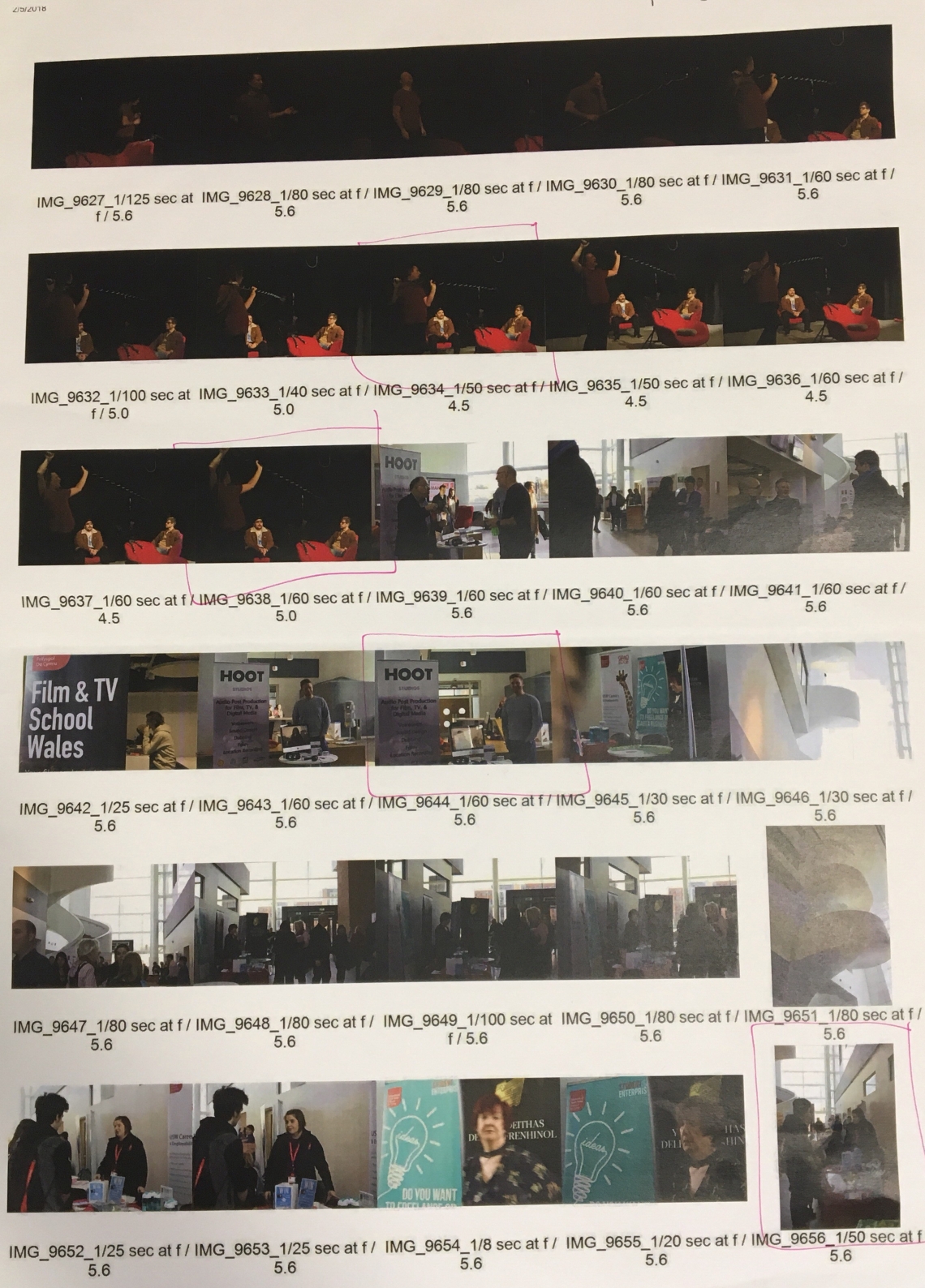
From the contact sheet it is clear to see that I struggled with photographing in the talk because the lighting was very bad. Therefore, I need to edit some of my images to make them presentable for the brief. I also attempted to capture the 5 picture story however, it was difficult to capture all 5 different shots.
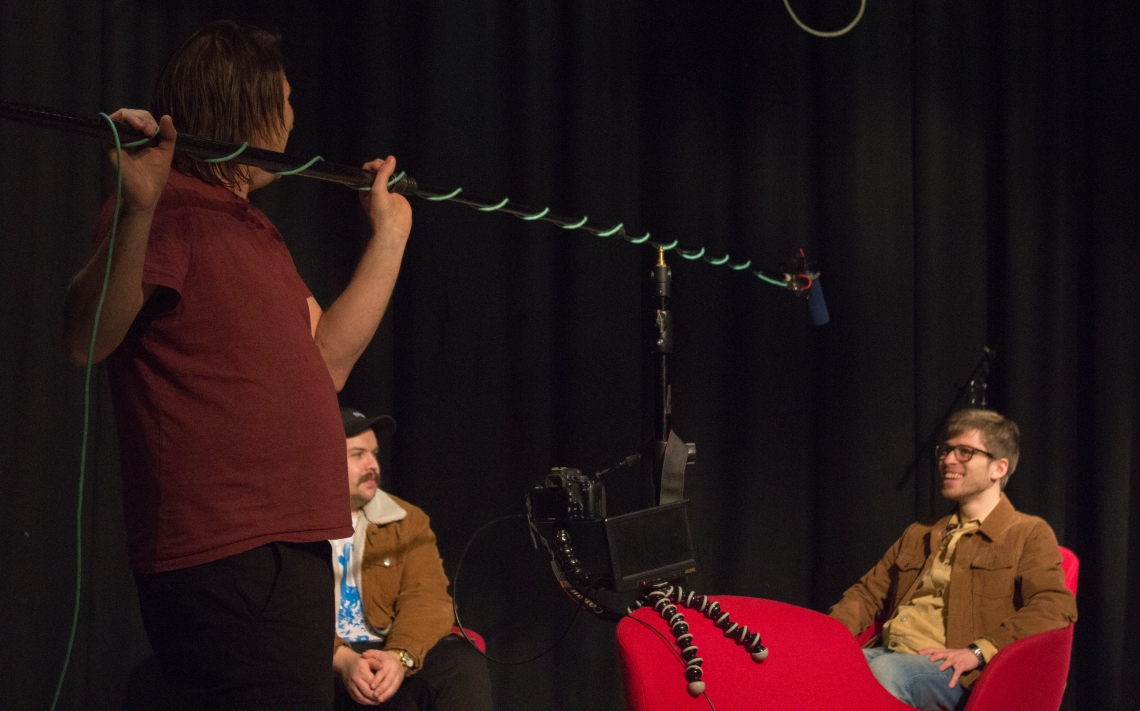
From doing this directed learning I learned how to work this the lighting I am given and how to work around a crowd. I did find this directed learning a bit difficult because for the first hour there was hardly anyone at the event and we had to make it look busy. I managed to do this by getting low within the small crowd that was there. I would used a slow shutter speed to make it look busy however people were stood still talking so there was little to no movement. Next time I will use a flash gun to try and fix the lighting and I will use a different lens to use a wider angle and get a different depth of field.
Environment
We have been give the brief of environment, we have to photograph either an issue, effect or mitigation of the environment. I first mad a list of ideas then put them into a mind map on my four favourite ideas and explained them further.
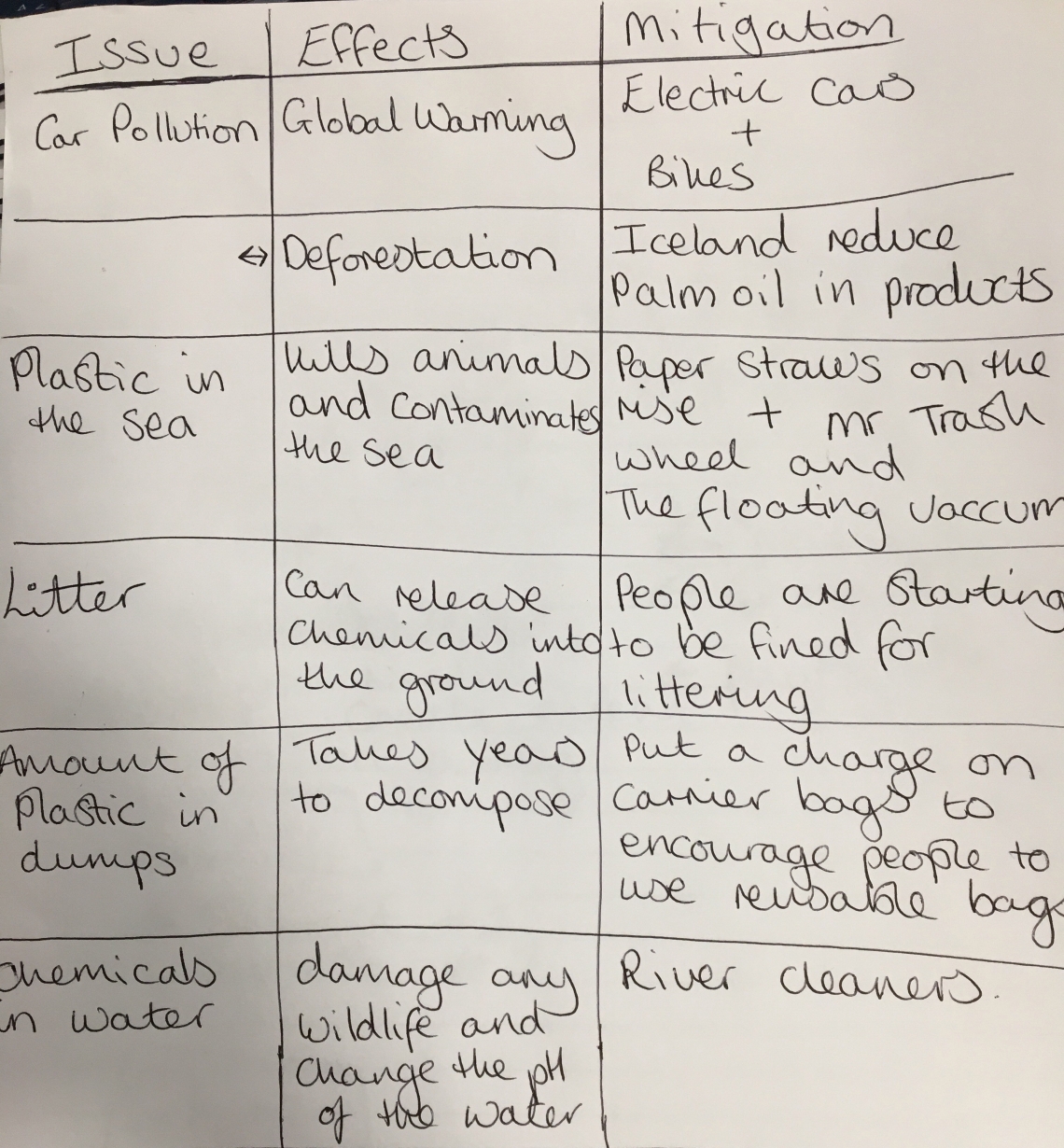
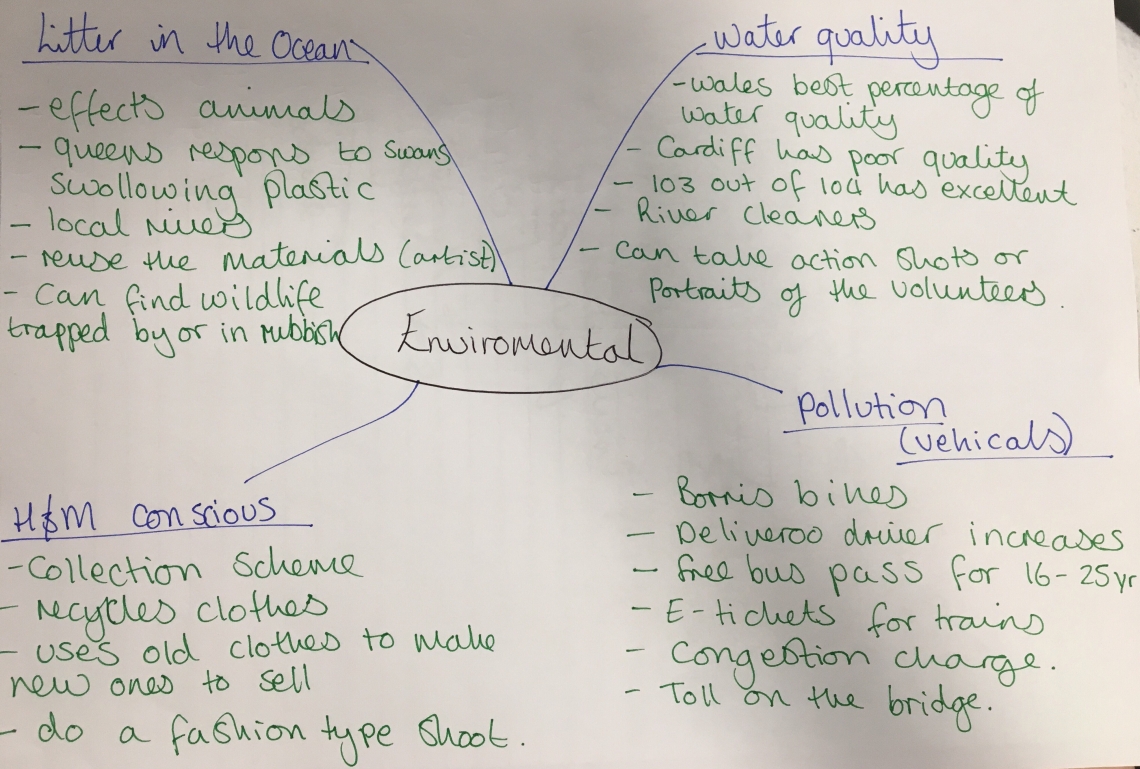
I chose to photograph a fashion photoshoot to show H&M Consious range. Every year tons of clothes and textiles end up in landfills however, almost 95% could be used again. H&M are aiming to reduce this number by their garment collecting initiative, this has been created to decrease the waste and close the loop within fashion. Once the textiles have been collected they are sent with usual deliveries to the closest processing plant. They aim to have zero waste during this process. Anything that is damaged is made into raw materials and new products. however, anything that can’t be produced into new clothing, it is then used to produce energy for the processing plant. H&M follow the three R’s (rewear, reuse and recycle) this helps minimise waste of the clothing. From old materials H&M make new items of clothing that they sell in stores all across the world. There are over hundreds of new products created by this scheme including accessories and shoes as well as clothes. As well as producing new clothes, for each kilogram of textiles collected 0.02 euros will be donated to a local charity chosen by H&M.
To capture this in a photograph, I want to use clothes from their conscious range and do my own fashion shoot as a campaign. Before I photographed this shoot, I studied some of their previous campaigns to see how they have styled the models, made them posed and the locations they have used. From their campaigns by photographer Lachlan Bailey, it clear to see that it is very posed but they do include a lot of natural environments in the background. I want to incorporate this into my images. I chose to photograph my images in Bute park because I thought the background of trees and grass will link to the environment in a subtle way.
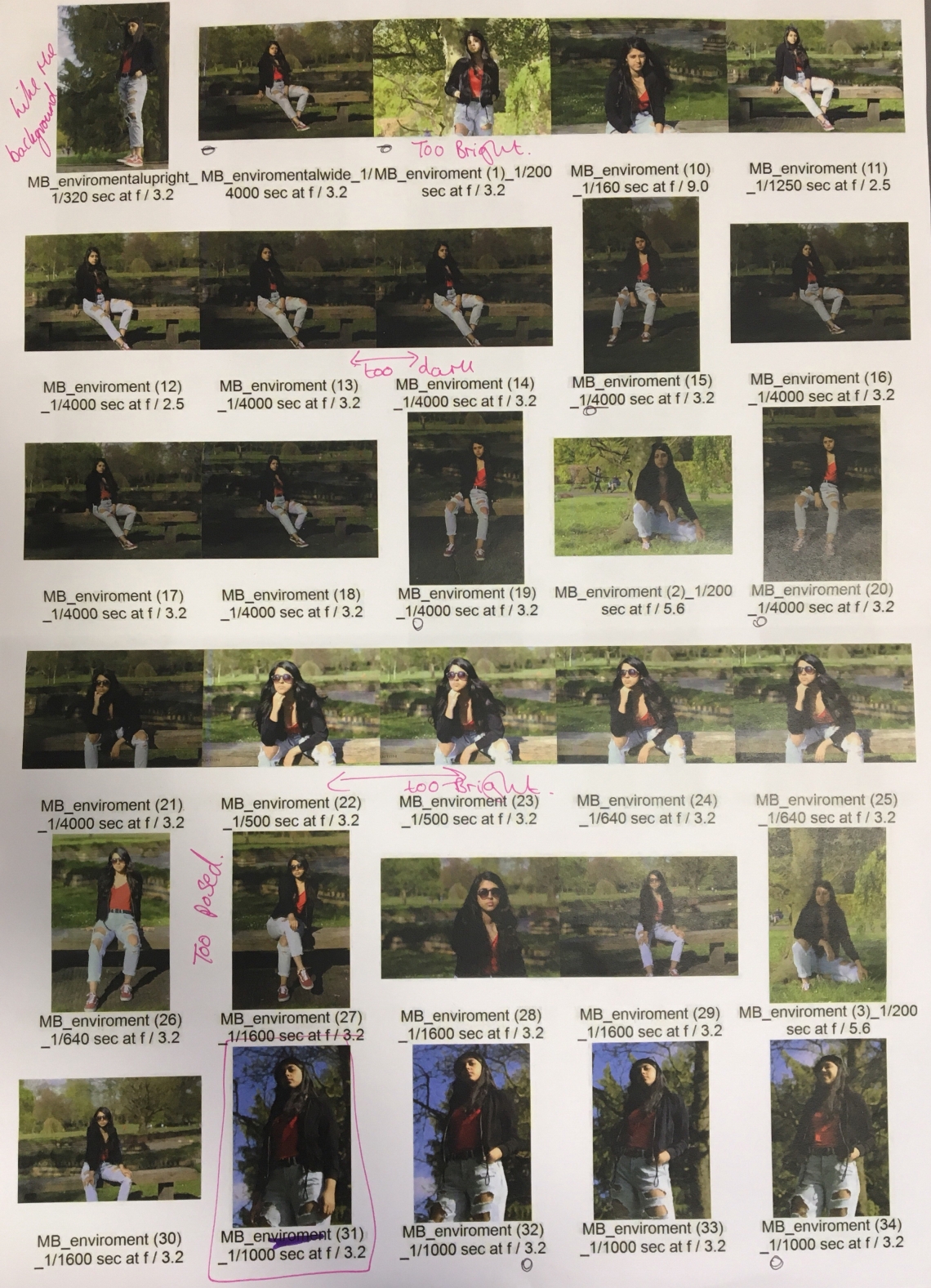
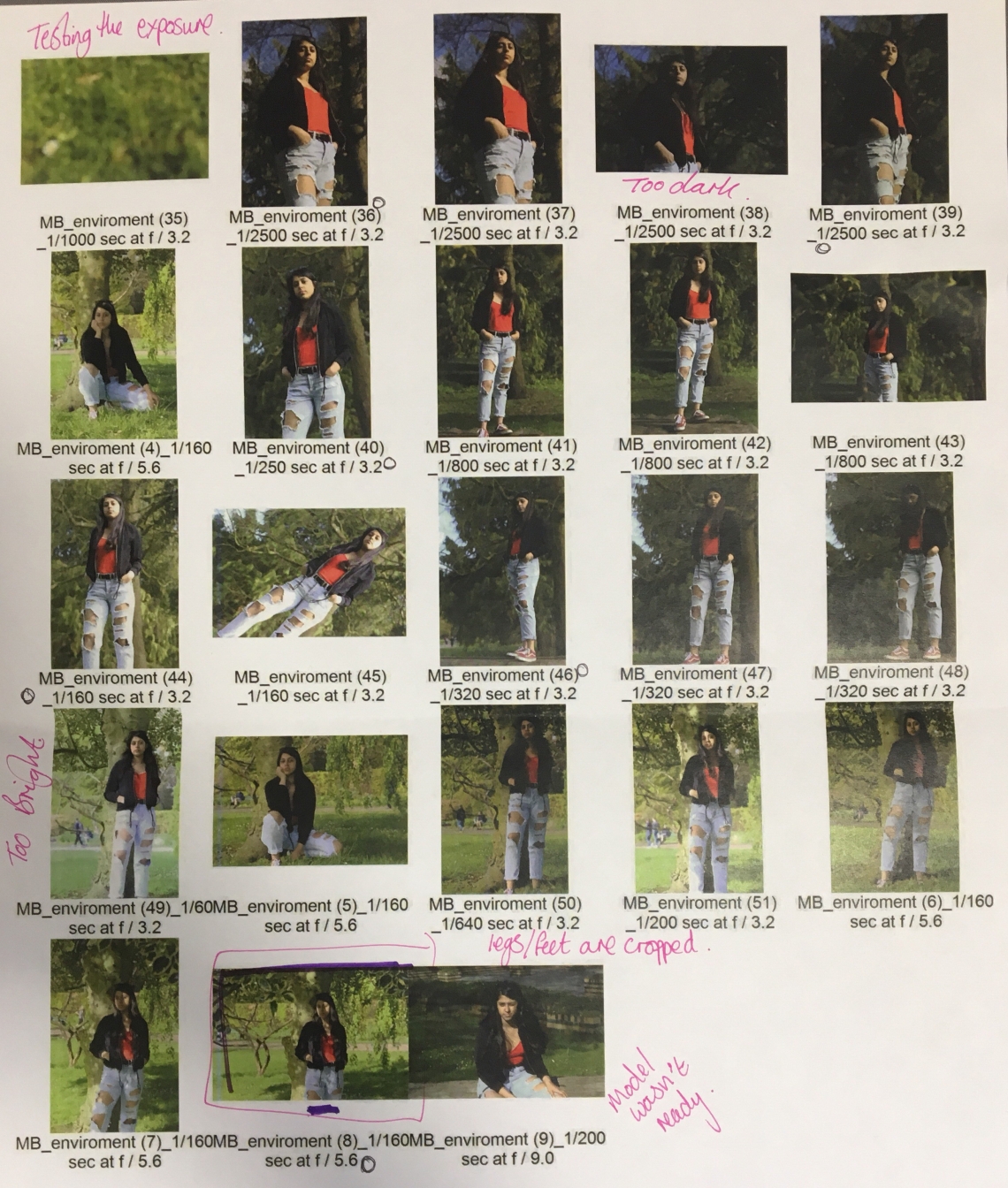
By doing this directed learning it has taught us how to find a story and produce images from nothing. Becky gave us one word and from that I have produced images that could be used to campaign H&M Conscious range.
Blue light event
The blue Light event is a car crash simulation at Glyntaff in Wales. This event taught USW student nurses how to respond to a car crash and work under pressure. We had been given the challenge to photograph this event. On the way to the event I didn’t know what to expect or what would be needed of us when we were there. I was give the role to photograph everything whereas other people had to do film and stay with the police.
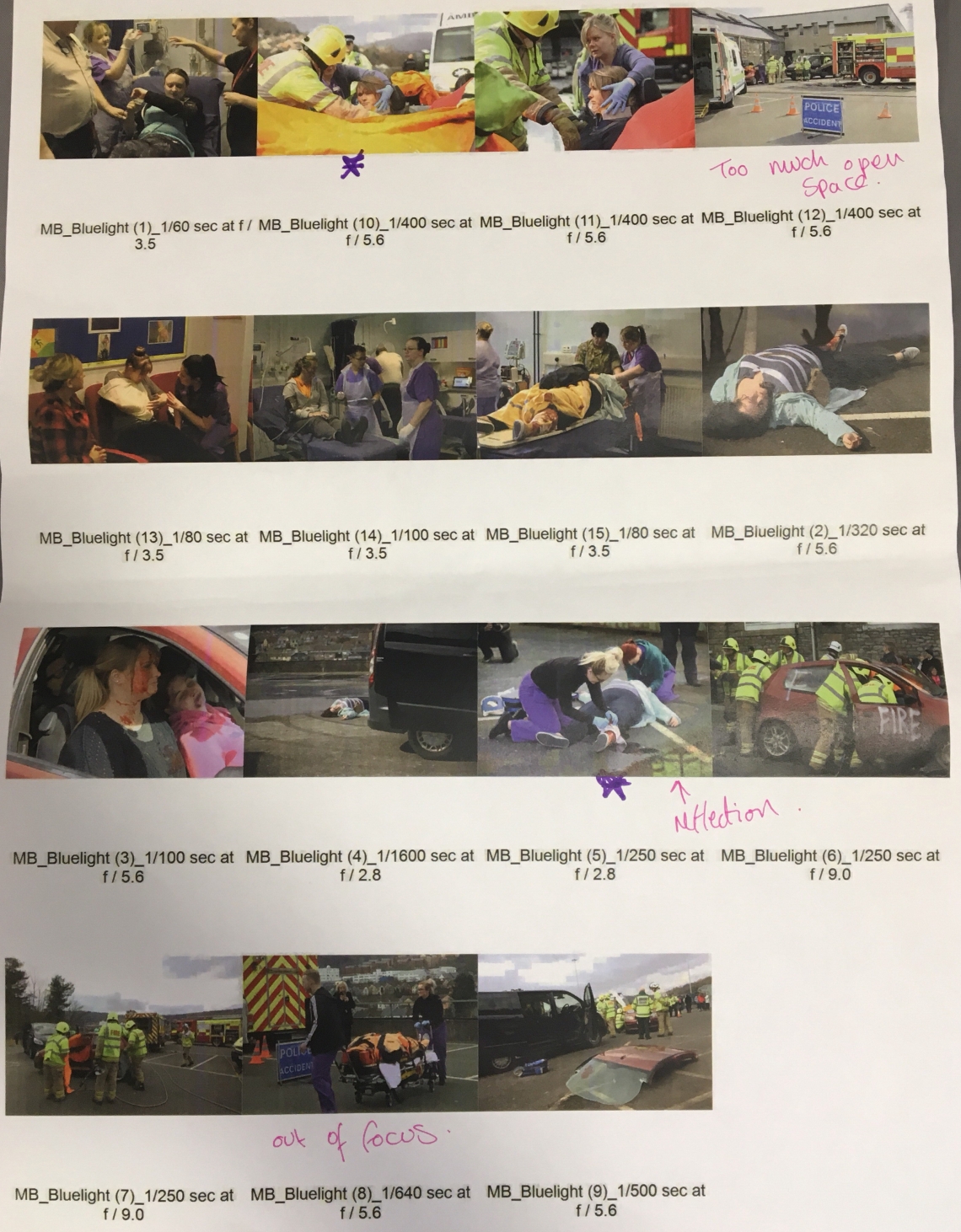
At the event I took almost 700 images, these in the contact sheet are some of the ones we put forward to the media. A lot of these images were published by University of South wales and South Wales Argus, however we were not credited. The day was crammed full of different exercises therefore making sure I photographed them all. WE did have a few obstacles throughout the day, one being that the police didn’t realise we were photographing he event and tried to get us to leave the property.
The event put in to perspective what it would be like to work in a real life situation like this. Being asked to move along and working down to a deadline to edit and send off the images. I enjoyed this because it challenged me in ways I haven’t been challenged before, I opened my eyes to what the industry is like.
Other Shoots
London Fashion Week Festival
I have been one of the people invited to photograph London fashion week festival. This involved me being in the photographer’s pit at the end of the runway, photographing 6-7 runways during the day and working along side Getty images. I was able to photograph runways by Zandra Rhodes and Steve Morris. I managed to take over one thousand images so I have gone through them and selected some that stuck out to me.
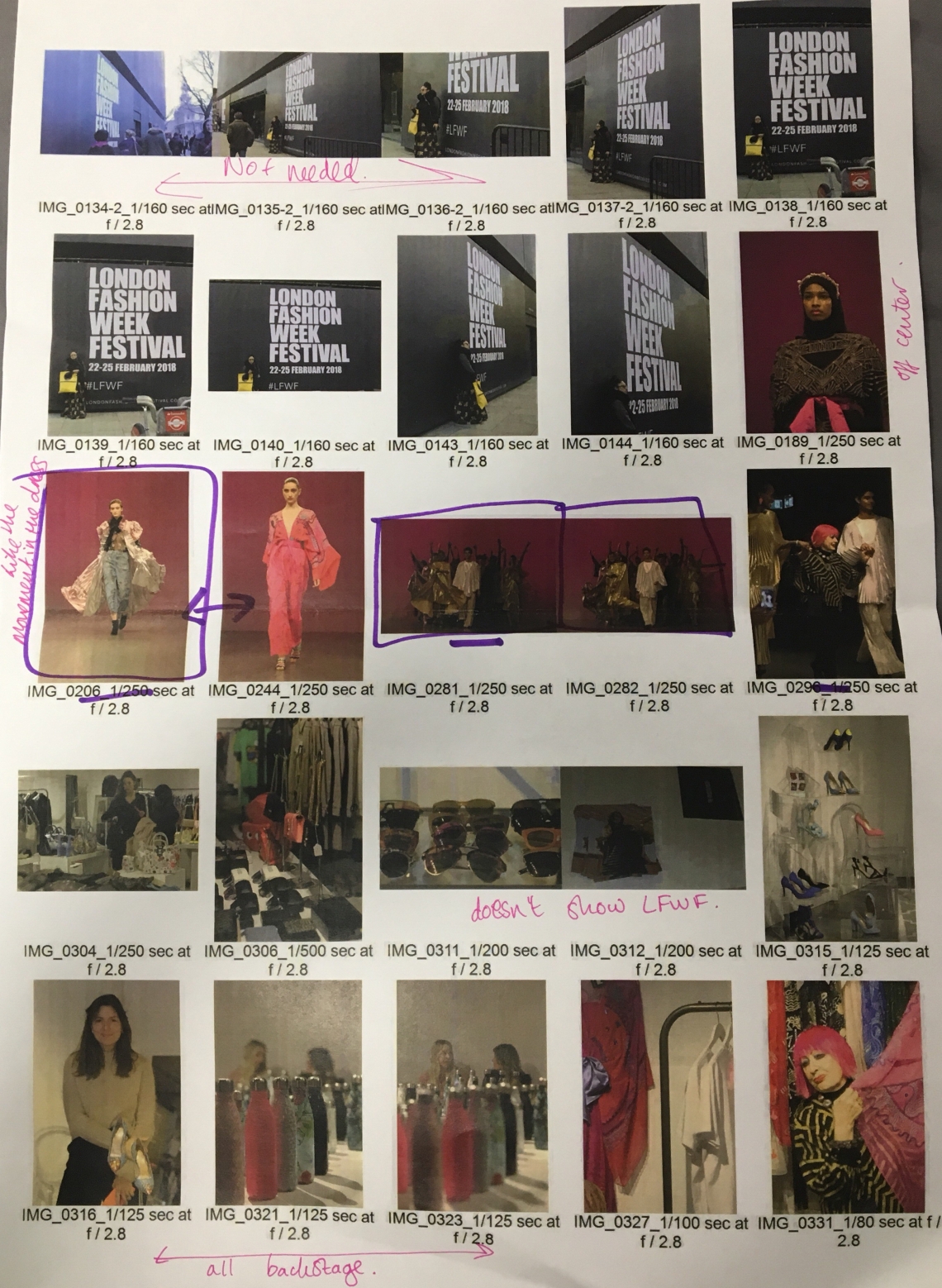
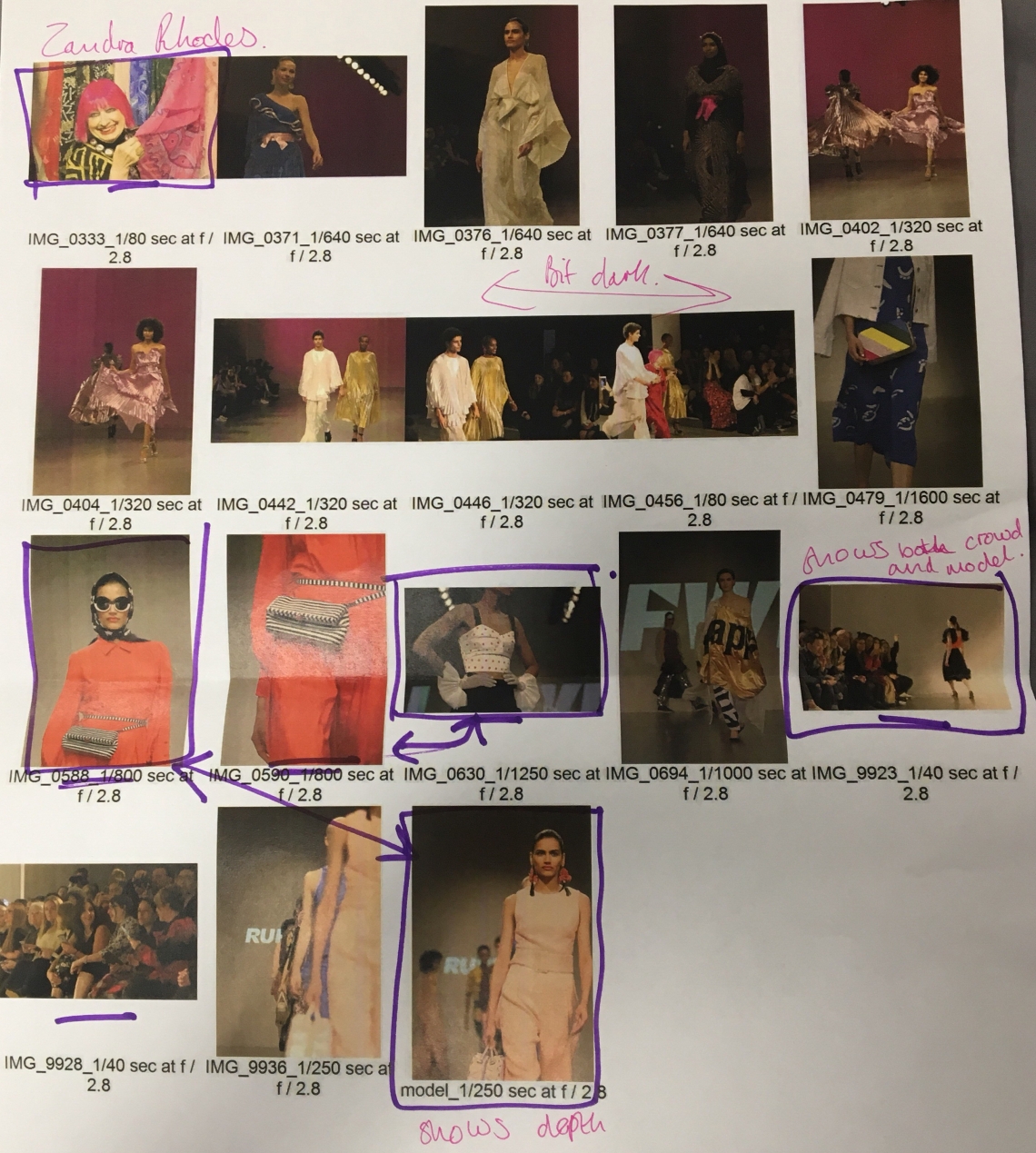

Mine and getty’s images are fairly similar because I followed the tips that were given to me. One being only photograph when the model’s front foot is on the floor.
Having this opportunity this early in my university experience helped me in many ways because fashion photography is possibly a route of photography I would like to explore which I had never thought of.
The Queen
While I was at home visting family I discovered that the Queen was visiting Plymouth to decommission the HMS Ocean. Therefore I knew I had to try and get a photo of the Queen. The decommissioning ceremony took place on the HMS Ocean therefore it was limited access which would make it difficult for me to get access. I knew that I wanted to get a image on her in Plymouth because it is rare for the Queen to go to Plymouth.
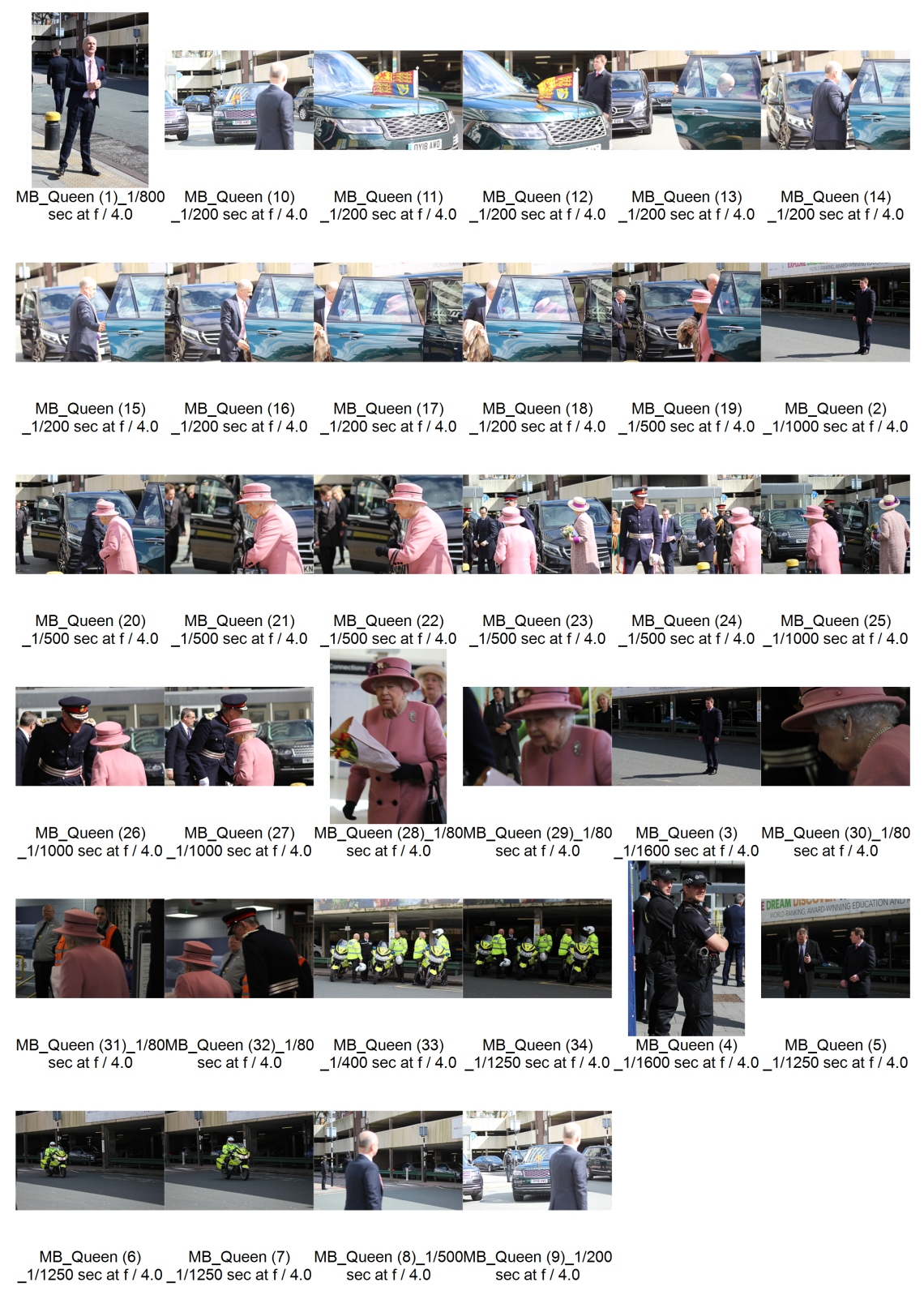
There was a lot of security and a lot of people surrounded me trying to get a glimpse of the Queen which made trying to get a shot because people kept knowing me so a majority of my images are unusable.
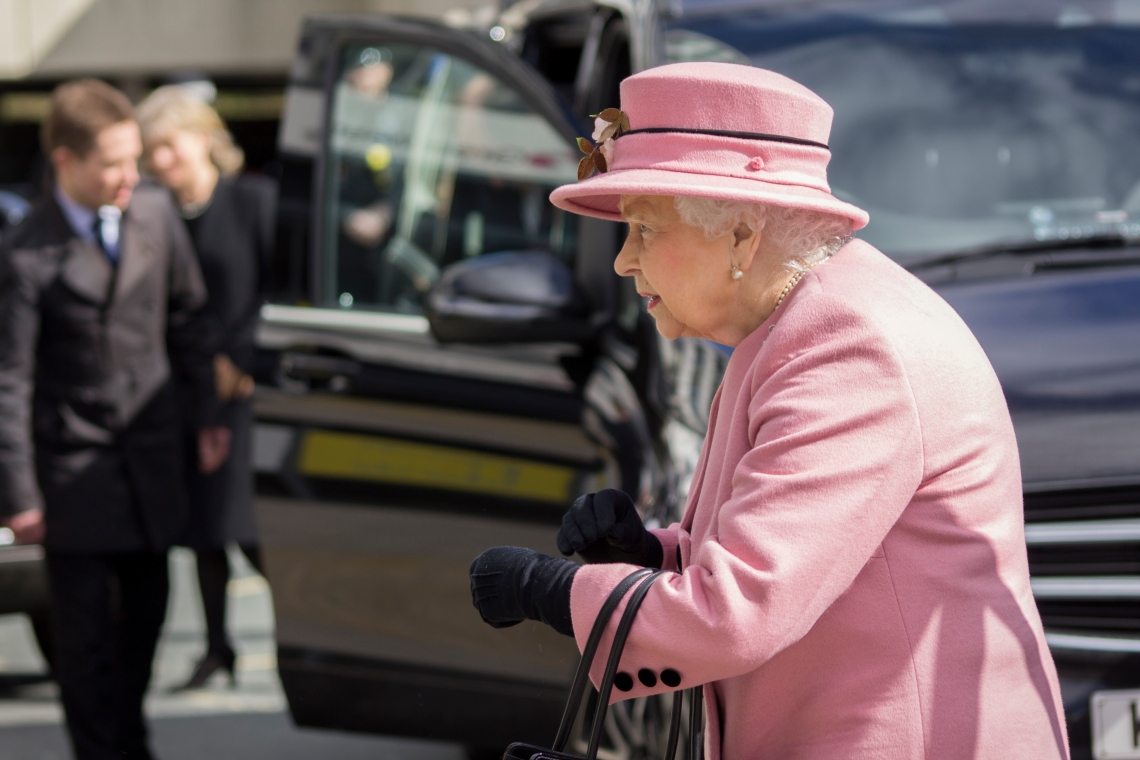
I have never been in this situation before, so this was a new experience for me. I feel that by doing this not only has it improved my portfolio but has also helped me technically to work really fast because, although the queen is old she moves very fast.
BBC Digital Cities
The BBC were holding an event at the Tramshead Tech to teach people about a range of subjects surrounding social media and story telling. These included branding social media and the art of story telling. Each talk had a person from that profession teach the subject to help improve our work.
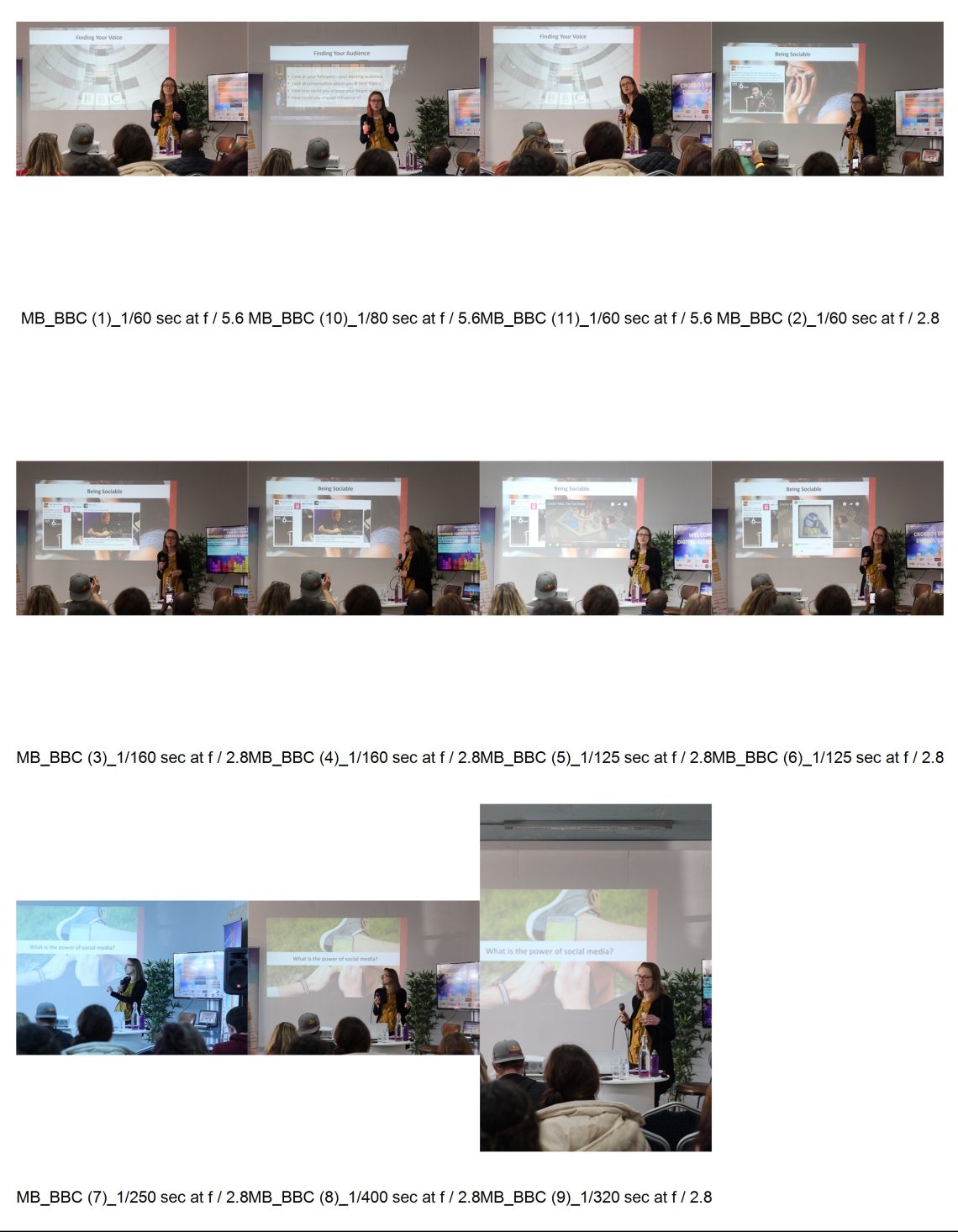
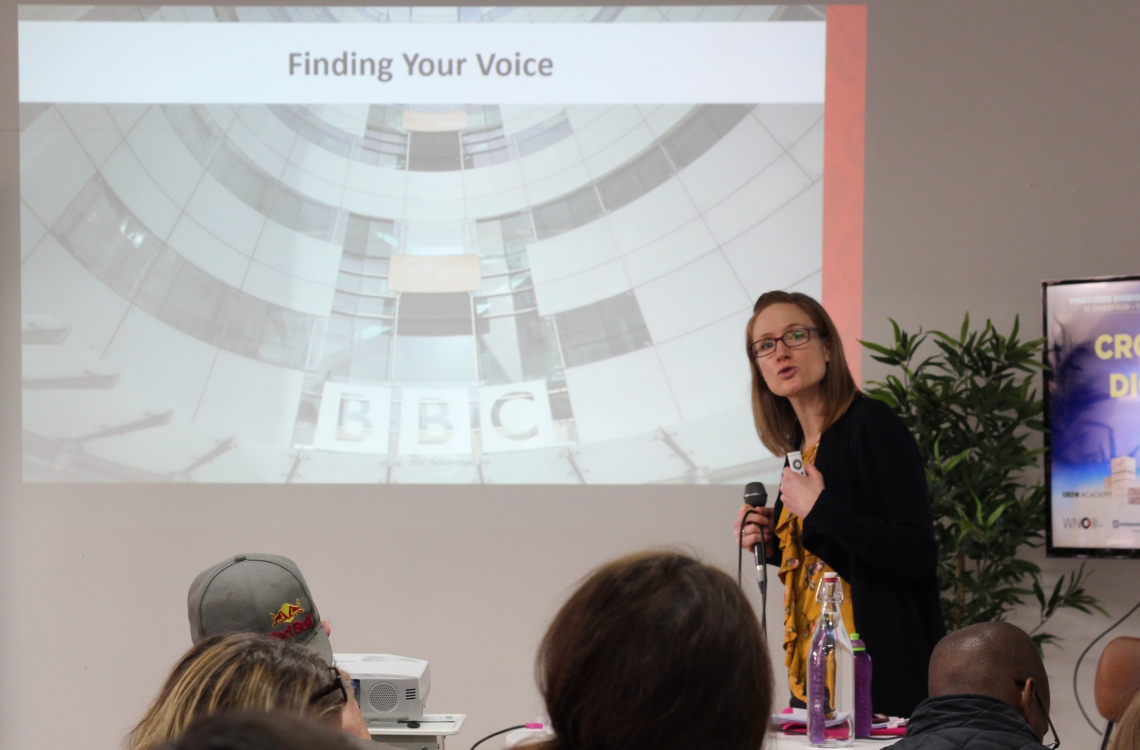
This event was beneficial in two ways. We were taught how to build our brand on social media and I was able to photograph a formal talk which I haven’t done before.
Salvation Army
When I was walking home from photographing something for another project I spotted a salvation army van with a huge crowd of people. As I got closer I realised that they were giving out free hot drinks and biscuits for homeless people. I know that it is a bit unethical to photograph the homeless however, I wanted to show the good deed that the salvation army was doing. But after three photos a person from the public told me to move along and that I wasn’t allowed to take photos.
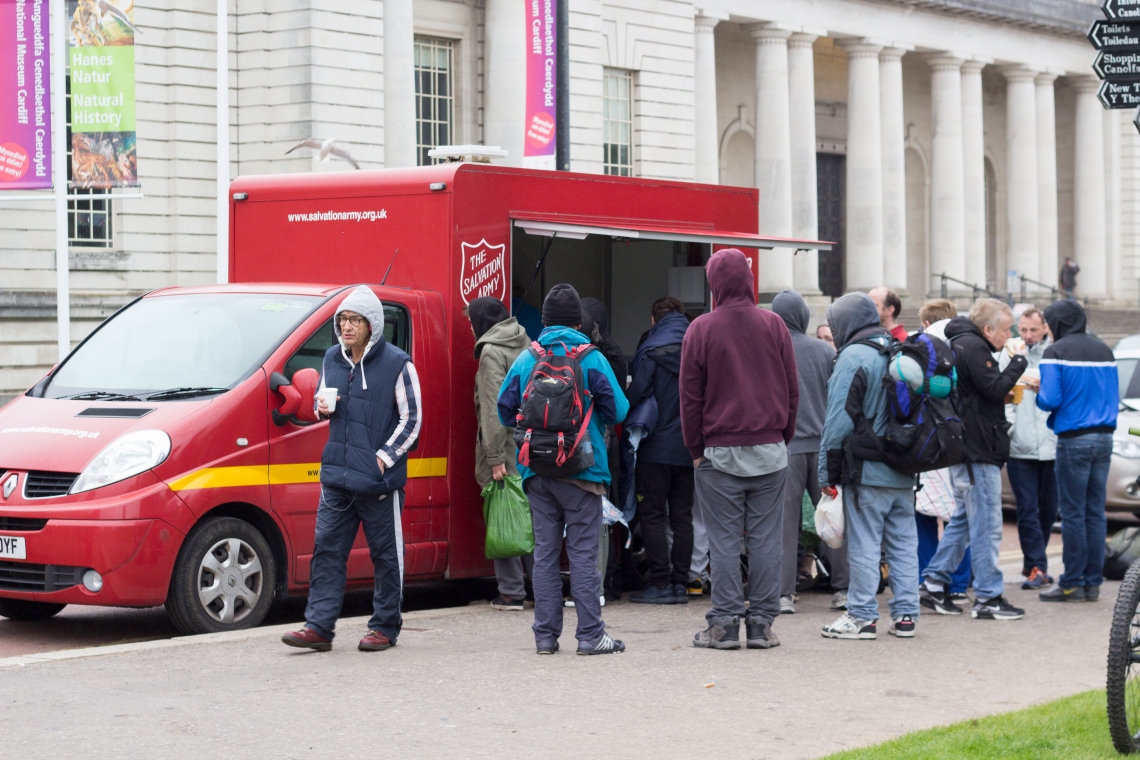
This put in to perspective what photographers have to go through, I was only able to get a few shots before being asked to move. This is what I will have to face when i am older and that has opened my eyes.
Sports
BUCS Championship
This was my chance to have a practise at sports photography. For this I have booked out a 70-200mm lens, I booked out this lens instead of a 300mm lens because this was practise shots for my assignment and I don’t feel comfortable using a 300mm as I haven’t had a lot of practise with it. We travelled to university of south wales Treforest campus, because that is where the sports centre is for the uni. Every Wednesday there are matches between different university’s in a range of leagues and championships.
When we were at the sport centre, there was a football match and a hockey match. The hockey match was between a group of girls, it was fairly difficult to photograph. This is because there is not a lot of action during the match and also it is usually played on a AstroTurf or a hard court so there is a fence around the edge which makes they background of the images look ugly.
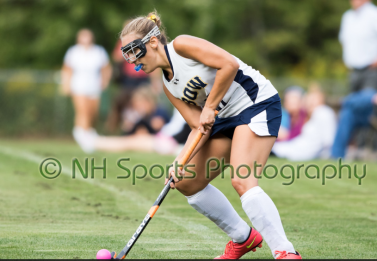
This image is by NH sports photography, Looking through their work its clear to see that in order to get good shots in hockey photography is to stay low. This is what I did while I was photographing this event.
These images didn’t come out very well, so I decided to go over to a field were there was a football match for the BUCS championship. This was easier to shot than the hockey however, this was still a challenge because when there was action it was over relatively quickly so I realised I had to work fast if I wanted to get some good shots.
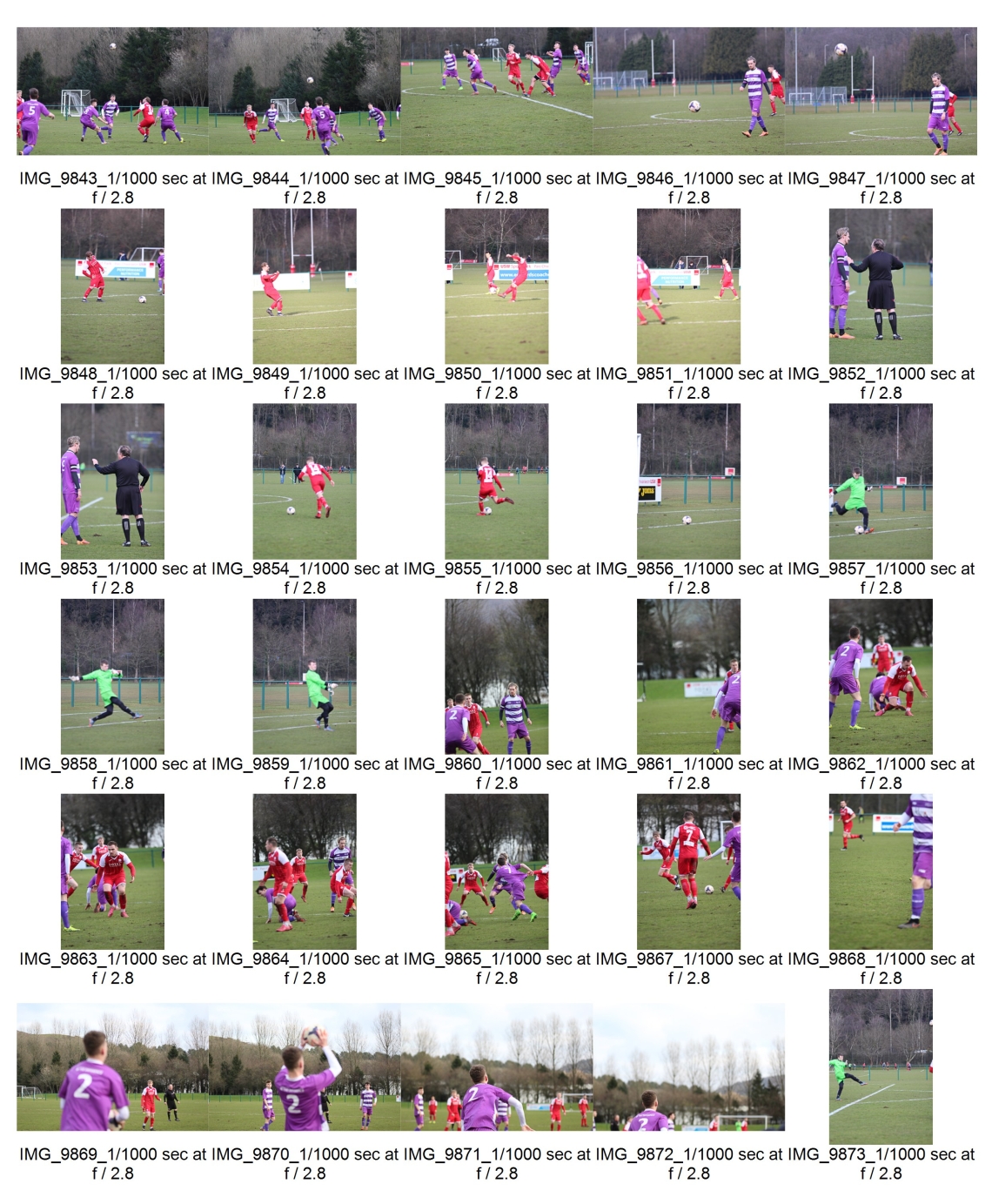
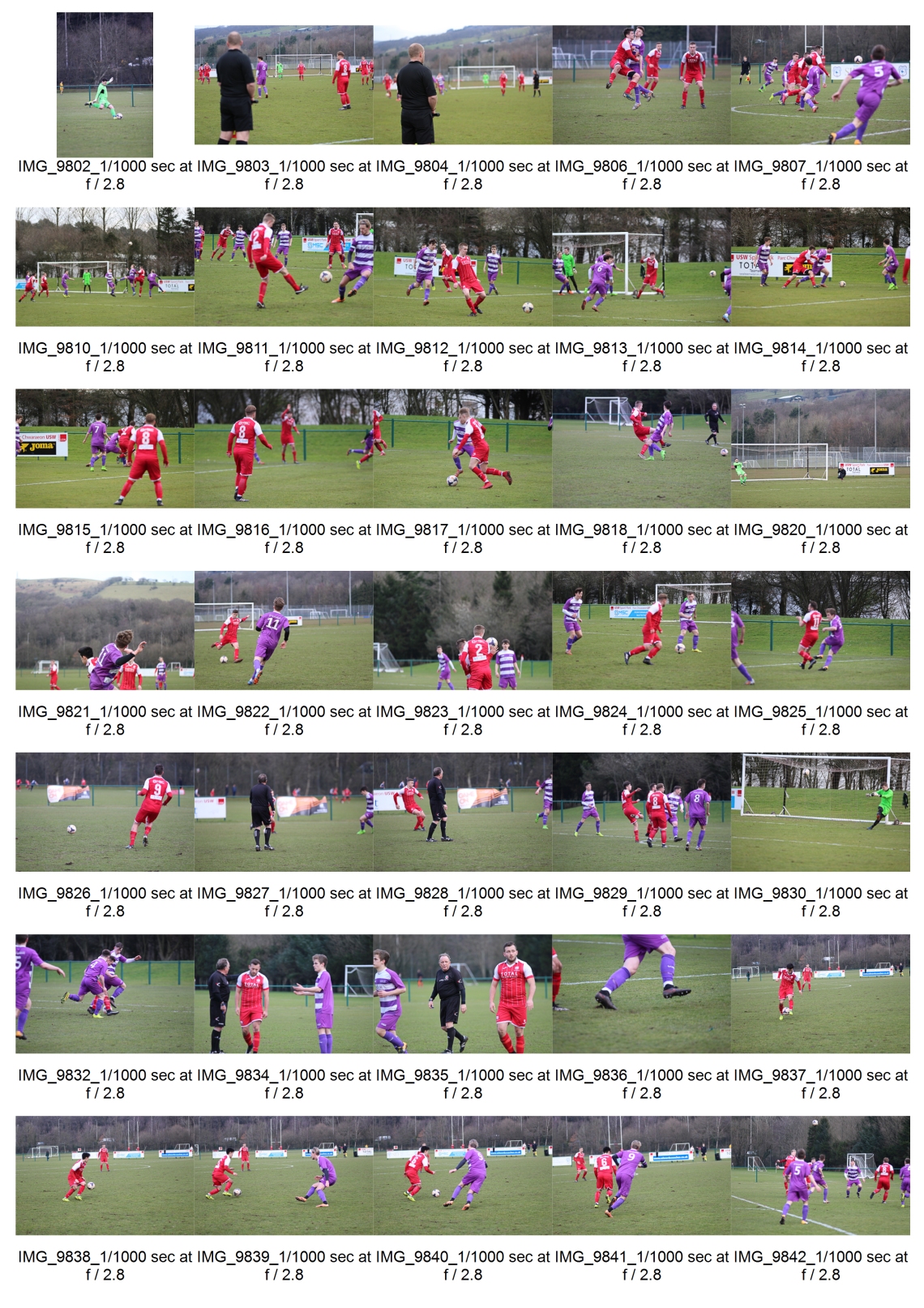
After looking through my contact sheets I realised that the majority of my images are out of focus. This just shows that I need more practise for my sports photography because I need to figure out the technique behind photographing sports.
Welsh League Division 2
At the sports park there was a match between AFC Porth and Pontypridd Town AFC apart of the Welsh League, this match wasn’t meant to be held here but due to building works it was. which meant I could get access to the match to photograph it. With help from a fellow student, who is known for his sports photography, Matthew Lofthouse I managed to improve my technique from my previous attempt to photograph photography.
Sport photography has been very difficult for me to try and get my head around, but by looking at other photographers work and working along side fellow students it has helped me. After my first practise I looked at work by Michael Regan, who is a world known football photographer. I knew that if I wanted to improve my work I need to look at his images and see what techniques he uses. Unlike his work I wanted to capture more tackles than anything else. I also wanted to photograph the celebrations like Michael does however, no one really celebrated at the match which made it difficult for me to photograph.
Iconic images that shaped the world
The image I have chosen to be an iconic image is the ‘Buring Monk’ by Malcolm Browne. I have chosen this image because of the change it caused worldwide. This is Thich Quang Duc, he allowed two fellow monks to douse him with gasoline and then set him alight. This was apart of a protest for the treatment and persecution of Buddhists by the president of that time- Ngo Dinh Diem. This protest is known as the Buddhist crisis which occurred during May and November 1963. Ngo Dinh Diem wanted to make people follow his catholic believes this made many Buddhist officers in the Vietnam Army converts to Catholicism as they thought their career would end. On 11th June 1963, Malcolm Browne was given a heads up that something big was going to happen during the protest and was told to prepare. While Thich Quang Duc was burning Browne continued to capture images every second as he did not want to miss anything. This image of the burning monk then went worldwide which brought attention to the policies of the Diệm government. J.F Kennedy saw the image and said “No news picture in history has generated so much emotion around the world as that one.” This led him to withdraw the united states support towards the Diệm government. Which resulted in international pressure on Ngo Dinh Diem, he announced he would make changes. However, his actions were not put into place and the situation then became worse. The protesters continued and as a reaction Ngo Dinh Diem allowed raids on Buddhist pagodas which resulted in him seizing Quảng Đức’s heart and caused deaths and widespread damage. Several Buddhist monks followed Quảng Đức’s protest and set themselves on fire, this caused J.F.K to react and chose not to interfere the South Vietnamese coup which resulted in the assassination of Ngo Dinh Diem. Therefore, the impact of this image forced people to question the U.S’s association with the Diem’s government, brought the treatment of Buddhist to JFK attention and eventually brought it to a stop.

Tabloids vs Broadsheets
It is important that we learn the difference between a tabloid and a broadsheet. By doing this it allows us to understand the type of images that different types of newspapers are interested in.
Tabloids are half the size of broadsheets and often concentrate on human interest. They are also cheaper than broadsheets, because of this they usually have a higher circulation figures. There is also around 50% of photographic content in tabloids.
Broadsheets are double the size of tabloids an concentrate on in depth coverage of political, national and international news. They are more expensive than tabloids and have a lover circulation figures than tabloids as well. The photographic content in a broadsheet are very low with only 10% being images and 90% being writing.
We were challenged to look through a broadsheet and a tabloid to see if we could find three of the same stories and how differently they were portrayed.
The first news story is about Boris Johnson meeting Myanmar leader, the first image is by The Sun and the second image is by The Daily Telegraph. Its very obvious to see that the daily telegraph focus on the story more than the sun because the story is suited more towards the daily telegraphs audience. The sun has chosen to use multiple images and little text to explain the story and the daily telegraph has used two images but a lot of text.
The Sun

The Daily Telegraph

The second news story is about a plane crash that killed 71 people, the sun used two images, on these images being a pretty blonde women. They used this image to try and capture the readers attention and feel sympathy for her instead of the other 70 people killed. The daily telegraph used an image that was straight to the point. unlike the sun there was also a large amount of text supporting this image.
The Sun
The Daily Telegraph
The third story I found was about the royal wedding. In these images its clear to see that the sun has given this story more publicity then the crash story. This is because the royal wedding is of people interest. There is a large image of Meghan in a wedding dress which catches peoples attention, there is also adverts surrounding the story about valentines day to create the sense of romance. The daily Telegraph’s version of this story is more conventional because they show a picture of where the two are to be wed. Both newspaper however have about the same amount of text in each story.
The Sun
The Daily Telegraph
Iphone photography and Stockimo
This directed learning is to take portraits using our phones and apps (such as VSCO) to adjust the brightness and contrast. I have to take four different portraits this includes
- close up head and shoulders with blurred background
- utilise window light
- environmental portrait ( tell us a story)
- utilise a background or foreground aesthetics
By doing all four portrait it allows us to think about the background when photographing someone because if there are objects behind them it could ruin the image.
Window light portrait
For both of these images I used VSCO to edit them, i’ve adjusted the brightness and contrast. For the black and white one I took out the saturation in the image and cropped the shot. The feedback I received for the black and white image was that the shot looks slightly distorted however, the reflection on her glasses adds depth to the image.
Environmental Portait
 For my environmental portrait I chose to use a lower angle to get more of the foreground in the shot and to try and avoid the lines of the backboard going through her head. As the majority of this image is white I chose to add contrast to the image to make the colours pop.
For my environmental portrait I chose to use a lower angle to get more of the foreground in the shot and to try and avoid the lines of the backboard going through her head. As the majority of this image is white I chose to add contrast to the image to make the colours pop.
Close up head and shoulders with blurred background

I used the app snapseed to edit this image as it has a tool called lens blur, this allowed me to have the background out of focus because I can’t change the aperture on an iphone camera. The feedback I received was that the blur near the face is still clear which looks unfinished so next time try a tilt shift effect instead of the lens blur.
Utilise the background
 I chose to blur the background on this image as well because I wanted to make the colours to blur together so my model stood out more in the shot and wasn’t lost in the art work. The feedback from this image was that i should of photographed her dead straight on so the lines of the shutters are perfectly straight across or shot from differing angles.
I chose to blur the background on this image as well because I wanted to make the colours to blur together so my model stood out more in the shot and wasn’t lost in the art work. The feedback from this image was that i should of photographed her dead straight on so the lines of the shutters are perfectly straight across or shot from differing angles.
Swaps: photographs from the David Hurn collection
David Hurn is a British photographer known for his documentary photography during the 1960’s. Hurn is a collector of photography work and has traded prints with many photographers from the 20th and 21st century and built up a large collection of containing around about 700 photographs. Our task is to go to The National Museum of Cardiff to view the swapped photographs from the David Hurn collection. This allowed us to witness a variety of photographers and the styles of photography. By looking at others photographers work it allows us to analyse their work which helps us develop our own photographic skills. We were given the assigment to choose three images from the collection that relates to our own practice and analyse the narrative of the image. These are the three images I have chosen to analyse.

My first image I have chosen is by David Alan Harvey and it is of a “gang” of french teenagers in 1988. David Alan Harvey is an American photographer, he is based in North Carolina as well as New York City and has been a full member Magnum since 1997. I chose this image because it shows at least four narratives within one shot. Harvey revealed that he references to Henri Cartier-Bresson which you can tell by his work because the image documents candid shots which Cartier-Bresson was known for. This image reflects my work because I try to photograph candid shots because I think it makes the image look natural. Harvey used a depth of field to show the different narratives within the shot, the angle he took the photo causes each face to be the emphasis of the shot. The time of when he shot this image shows his skills as he used the best time of day to have the best lighting that highlights the image but is not harsh on any of the people.

My second image I have chosen is by Steve McCurry, it is the image of a Girl with Green Shawl. Steve McCurry is a American photographer who has worked in photojournalism and editorial. This image uses a shallow depth of field not only does it make the girl stand out, it shows makes her eyes the emphasis of the image. The colours compliment each other which make the image more appealing to look at, the green in the shot makes her blue eyes stand out. This seems to be a trademark for Steve McCurry to make the models eyes the emphasis of the shot. I want to use his skills of shallow depth of field and to make the eyes an emphasis in my future portrait work to create stronger shots.

Daniel Meadows is an English photographer turned maker of digital stories, and a teacher of photography turned teacher of participatory media. I chose this image called Girl’s Parade Preparations. I think this image is interesting because of the use of symmetry and pattern. By using symmetry and pattern and the angle Meadows has used a deep depth of field to capture the viewers attention. I want to incorporate symmetry and pattern into my photography practise to make my work more visually appealing.
Metadata and Captioning
Captioning is just who, what, where and why. This is key in an image because if the story isn’t fully shown in the image then reading the caption will give the viewer or publication all the information they need to know.
The term metadata is basically ‘data about data’. Some metadata is written by the camera and some is input by the photographer. metadata provides information about one or more essential information of the photograph, such as:
• Camera Data inc. technical settings, exposure, date & time
• Photographer’s contact information
• Copyright owner & contact information
• Description Information about photograph
•Keywords – Making the image searchable on the library/ internet
It’s important to have the correct metadata because if the image has keywords then search engines can find the image . so if the image does not have metadata anyone can buy your image and bot give you the commission. Once your work is published to the Web, metadata can help protect you’re your rightful financial compensation.
To metadata an image in Photoshop
> Open file
> File Info.
> Fill in the ‘Description’ and ‘IPTC’ content
information
> Save As for individual file/ or export
Metadata Template which can be accessed in
Bridge to batch metadata.
Overall, it is extremely important to make sure that any image that goes online is correctly captioned and has metadata.
Conclusion
For this collaborative practise module I feel like my portfolio has dramatically improved. I have experienced jobs that I normally wouldn’t of taken because this module is all about pushing yourself out of your comfort zone. My techniques while I photograph has improved because i have been able to work with multiple people including Getty images. I feel like I need more practise when it comes to sports photography, I also need to try a better variety of sport than just football and hockey. Overall, this module has helped me improve my work by giving me challenges every week in the form of directed learning. The directed learning has also kept me on top of my work and makes me think of how to approach a job differently now than just the straightforward way.

